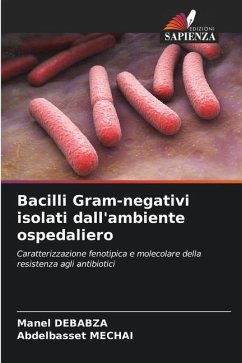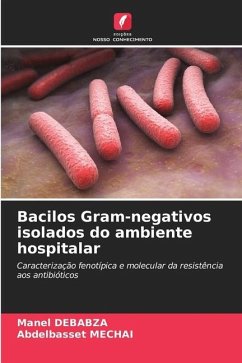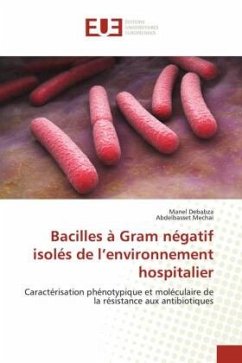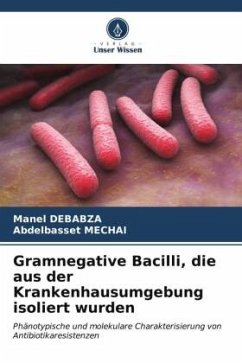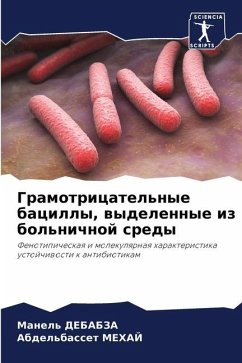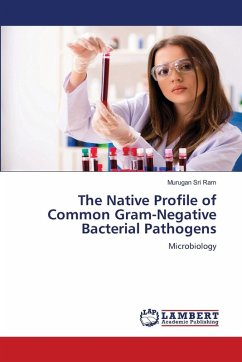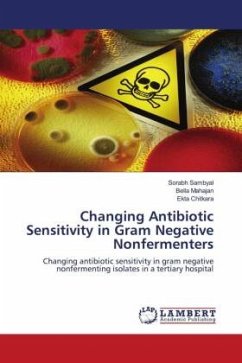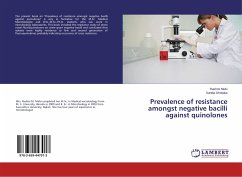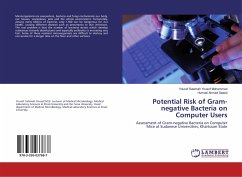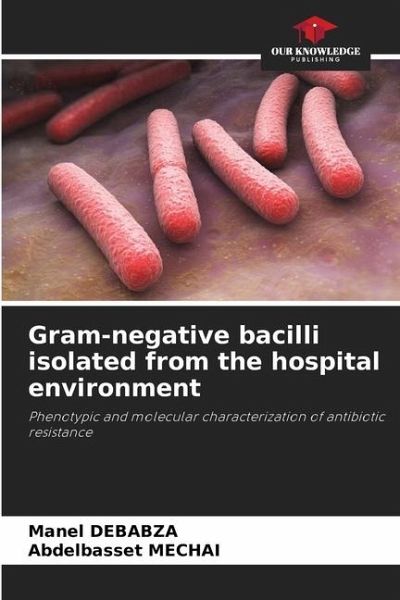
Gram-negative bacilli isolated from the hospital environment
Phenotypic and molecular characterization of antibiotic resistance
Versandkostenfrei!
Versandfertig in 6-10 Tagen
60,99 €
inkl. MwSt.

PAYBACK Punkte
30 °P sammeln!
In this study, 306 Gram-negative bacilli (GNB) strains were isolated from the hospital environment, 74.51% of them enterobacteria. Antibiotic susceptibility testing revealed resistance to various families of antibiotics, in particular beta-lactam antibiotics, although imipenem, aminoglycosides and fluoroquinolones were remarkably effective. Extended-spectrum beta-lactamase (ESBL) detection tests were used to characterize 114 strains of ESBL-producing Enterobacteriaceae (EBLSE). Analysis of plasmid profiles showed that multi-resistant strains host 1 to 4 plasmids ranging from 1Kb to 170Kb. Conj...
In this study, 306 Gram-negative bacilli (GNB) strains were isolated from the hospital environment, 74.51% of them enterobacteria. Antibiotic susceptibility testing revealed resistance to various families of antibiotics, in particular beta-lactam antibiotics, although imipenem, aminoglycosides and fluoroquinolones were remarkably effective. Extended-spectrum beta-lactamase (ESBL) detection tests were used to characterize 114 strains of ESBL-producing Enterobacteriaceae (EBLSE). Analysis of plasmid profiles showed that multi-resistant strains host 1 to 4 plasmids ranging from 1Kb to 170Kb. Conjugation experiments showed co-transfer of gentamicin and cotrimoxazole resistance to plasmids of 10Kb, 20Kb, 125Kb or 165Kb. PCR of transconjugating strains detected the bla CTX-M-1, bla TEM and bla SHV genes, as well as the qnrB genes. This study shows that the hospital environment is contaminated by multi-resistant BGN, particularly EBLSE, and that it can be a potential source of epidemics, prompting recommendations to be made within health facilities.





